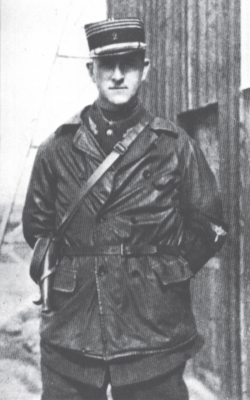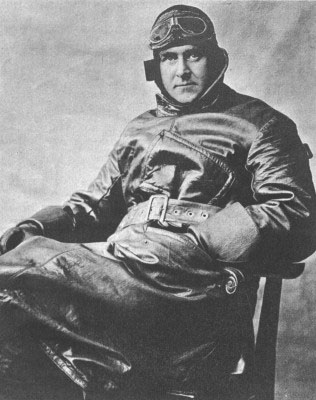Accounts of the period when command arrangements for the Royal Australian Air Force were decided prior to its formation, on 31 March 1921, have usually focused on the competing claims of two local officers: Lieutenant Colonel Richard Williams, formerly of the Australian Flying Corps (AFC) during World War I, and Wing Commander S.J. (‘Jim’) Goble, an Australian whose wartime flying had been with Britain’s Royal Naval Air Service.
In fact, the choice of head for the new air service need not have been confined to these two alone. There was at least one other candidate available within Australia whose rank and experience equally qualified him to lead the RAAF.
Walter Oswald Watt had enjoyed a longer association with military aviation than either Williams (who gained his wings at Point Cook, Victoria, in November 1914) or Goble (who got his in England in October 1915). Known as Oswald, or by his nickname of ‘Toby’, Watt had been an officer in the citizen forces in New South Wales for a decade before Williams attained this status in South Australia in 1911, the year in which Captain Watt went to England to learn to fly at the Bristol School on Salisbury Plain. Qualifying for a Pilot’s Certificate from the Royal Aero Club in July 1911, he returned home in November.
A month after Watt’s arrival, the Defence Department took the first steps towards acquiring aircraft and instructors for a local flying school. Early the next year, it was Wat —as the department’s first trained pilot—who was sent to Canberra to select a suitable site for the school, which the Minister for Defence wished to see located close to the national capital. In March 1912 Watt recommended a location near the new Royal Military College, Duntroon, which was expected to provide a proportion of the school’s trainees.
On 20 September 1912 the Military Board (which administered Australia’s army) authorised the establishment of ‘a Flying School and Corps’. Watt very likely expected himself to have a major role in the new establishment, because soon after delivering his recommendation regarding the school’s site, he departed for England to investigate aviation developments abroad on behalf of the Defence Department.
Unfortunately for whatever plans had been made for Watt’s future involvement in an Australian flying corps, events in his personal life intervened at this point. In 1913 his marriage ended in the Sydney divorce court, in a case reported around Australia. Watt took himself off to Egypt where he bought a Bleriot XI monoplane and set himself up as a civilian pilot. In May 1914 he moved to Paris, and when World War I began three months later he joined the military aviation section of the French Foreign Legion as an ordinary soldier.

Over the first 18 months of the war, Watt won great experience and distinction in action. Awarded the Legion d’Honneur and the Croix de Guerre, he also received the brevet rank of Captain. In March 1916 he transferred to the AFC and went to Egypt in May to join No 1 Squadron.
Six months later he was promoted Major and appointed to command the AFC’s newly-formed No 2 Squadron. Taking the unit to England in January 1917, he continued its training in a fighter role flying DH.5s and by September he was leading the squadron across to France. No 2 Squadron arrived on the Western Front at a time of heightened activity.
During the Battle of Cambrai beginning in November, six of the unit’s pilots won the Military Cross – a record which was regarded as a tribute to Watt’s leadership. But this reputation took a considerable toll on Watt in terms of physical and emotional strain. The punishing hours that he worked in his office, along with concern for the wellbeing of the young pilots he was daily sending off into combat, soon wore him down. When the Australian war correspondent, Charles Bean, visited in December 1917 he found Watt looking ‘very wan’ and watched him fall asleep in his chair immediately after dinner, shivering even though it was not a cold night.

In February 1918 Watt was promoted Lieutenant Colonel—four months before Williams was promoted to the same rank in Palestine—and sent back to England to take command of the four squadrons of the AFC’s 1st Training Wing in Gloucestershire. Even away from the front line, Watt still continued to inspire those under him. When novelist W.J. Locke visited the wing shortly after the Armistice in November 1918, he was impressed to find not one of Watt’s men ‘who did not confide to me his pride in serving under a leader so distinguished’.
Appointed an Officer in the Order of the British Empire (OBE) in January 1919, Watt returned home in May and immediately took his discharge from the AFC, preferring to immerse himself in his family’s lucrative business interests. He maintained his interest in aviation, however, and was elected president of the New South Wales section of the Australian Aero Club. In August that year he became the senior member on a committee of former AFC commanders which helped vet the suitability of applicants for the Air Force, which was even then being planned. With formation of the AAF delayed, Watt’s views were sought regarding appointments to the Australian Air Corps when that was set up as an interim organisation in January 1920.
Although Watt’s name was never directly raised—so far as is known—as a contender for the leadership of the new Air Force, he was considered for the position of Controller of Civil Aviation which also came up that year. Reportedly offered the latter post by the Minister, he declined because of his business commitments. That he was not pressed to change his mind, both with respect to the CCA post or a more active role in the Air Force, was probably attributable to several considerations. His age probably told against him (at 42, he was a dozen years older than both Williams and Goble), and he probably still felt worn out by his wartime service. Privately wealthy, he did not need public employment; and possibly there was still a whiff of scandal attached to his name because of his divorce.
In any event, Watt’s life did not long outlast the RAAF’s formation. On 21 May 1921, his manservant found him floating in shallow water at Bilgola Beach at Newport, New South Wales, where he owned seven acres overlooking the ocean. Apparently he had slipped on rocks while collecting firewood early one morning, struck his head in falling, and drowned in a few inches of water when the tide came in. He was accorded a military funeral at Randwick, Sydney, attended by representatives of the AFC and the RAAF. Later in 1921 a bequest from his estate established the Oswald Watt Gold Medal, which was awarded to serving members of the RAAF on numerous occasions in later years (in 1924, 1926, 1952, 1953 and 1958). Also in 1921 an Oswald Watt Prize was established for annual competition at the Royal Military College, with the cadet writing the best essay on military aviation or aeronautics receiving a pair of binoculars.
Contact Office of Air Force History about this article.






